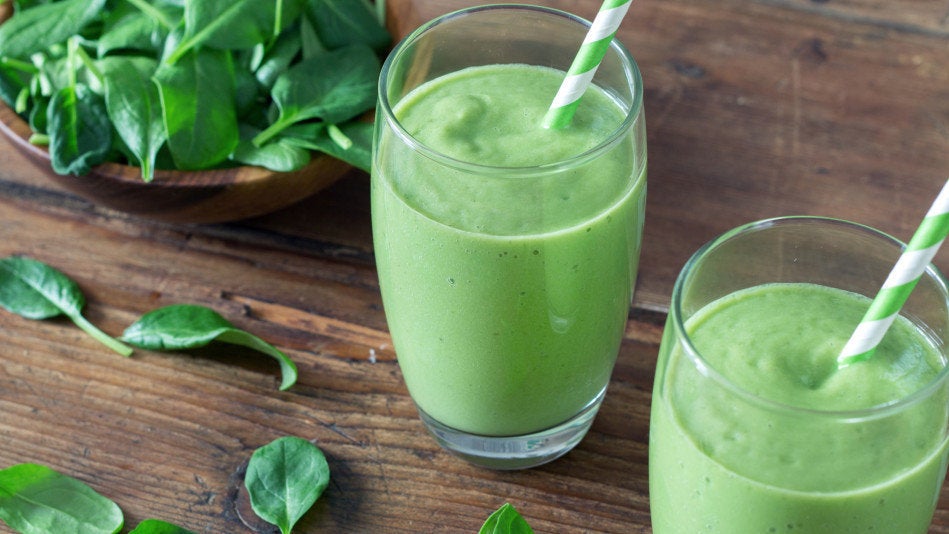As someone who has been in the food world for 25 years ― cooking in restaurants, teaching culinary school, talking food on radio and TV, writing ― I know a lot about what Americans eat. By extension, I thought I knew how to eat, too. But, like many women, I’ve spent most of my life in a battle with food. Now, as I approach my 50th birthday, I’ve finally figured out the food puzzle, especially how it relates to aging―the key questions of what to eat and why.
When I was eight, my pediatrician pronounced me “too fat.” I was a chubby kid, in the skinny-kid world of the 70’s and 80’s. Goodbye canned ravioli, hello cottage cheese and celery. Not a fun way to eat, or it turns out, especially healthy, either. Fast-forward 40 years and I’m very healthy now; I eat really well, exercise a lot and feel great. I’ve figured it out. I eat things like vegetables, beans, protein, lots of fat, a few good grains. Nuts, seeds, organic dairy, grass-fed butter and cheese. Fermented stuff. Basically what my ancestors in Europe ate 100 years ago.
I feel good, but I’m still angry. Angry at my mom for keeping me on a diet forever, but mostly at the diet-industrial complex which, based on shoddy science and corporate interests, radically changed the way Americans ate in the post-War era. An avalanche of hyper-processed foods, and the low-fat high-sugar and carbs dogma of the 1960’s-2000’s, have come back to bite us with disastrous results, namely, record rates of diabetes, obesity and diet-related cancers that are directly attributed to poor diets. For 30 years, we thought of fat as the enemy when it should have been our best food-friend and instead added sugar to everything to compensate and look at what’s happened.
The Baby Boomers and the Gen-X’ers (my people) were hit the hardest by this utterly misguided way of eating; we were the human lab rats for a 50-year experiment in nutrition and metabolism that went horribly wrong. And now that we’re aging, we have to furiously backpedal and make some major changes fast, or we won’t outlive our butter- and whole milk-loving grandparents.
Anyone who was born after WWII was indoctrinated in this false idol worship of low-fat, and although the dogma has been thoroughly debunked and proven unhealthy, the ideas still pervade our lives and supermarkets. In 2010, Frank Hu a lead researcher in this field and a professor of nutrition and epidemiology at the Harvard School of Public Health, told The Los Angeles Times, “The country’s big low-fat message backfired. The overemphasis on reducing fat caused the consumption of carbohydrates and sugar in our diets to soar. That shift may be linked to the biggest health problems in America today.”
A 2014 study found that the prevalence of type 2 diabetes among ten to 19-year-olds rose 30 percent between 2001 and 2009. By 2012, fully one half of the entire U.S. adult population had either diabetes or pre-diabetes.
What’s a Boomer or X-er to do?
We older folks like to dump on millennials, but they seem to be getting it right when it comes to food. They shop less in supermarkets, avoid processed food, and are cooking. They’re eating like their great-grandparents, because they’ve gotten the message: Dump the junk, eat real, lots of vegetables, embrace the fat. Millennials are champions of the “locavore” movement, and are becoming farmers and food producers. They’ve even stopped eating in restaurants as much.
After much research on traditional eating, I personally decided to jettison all the diet advice I’d ever been given, and start eating like my great-grandparents did back in Europe, and guess what? It worked. They all lived to ripe old ages and I realized that eating to age well means eating real. Full-fat, unprocessed, copious produce, no packaging, limited sugar, real food. What took us all so long? All that food has been sitting there all along, quietly waiting for us to re-embrace it. Sorry, real food, will you still take us back?
Of course, the food industry still doesn’t want you eating real, there’s not enough profit in it. The shift toward whole, fresh food means General Mills and other Big Food companies are feeling the effect, sales are slumping and profits are down. So, they want you eating fake real food, or what I call “Foodiness”; the same old junk food, now masquerading as healthy real food. They’re onto us, and they’re constantly spinning out new products: vitamin-enhanced, sweetened water drinks, or sugary low-fat yogurt made “just for women,” or diet cereal bars with a few dehydrated strawberries, passing itself off as “healthy” and you’ve got the picture of Foodiness. As public health lawyer, Michele Simon said, about Big Food’s attempt at so-called health, “The message is: It’s perfectly fine to promote processed food as your everyday diet, as long as it has whole grains sprinkled on it or has fewer calories.”
Foodiness made us fat and sick, but it’s not too late to reverse the tide. Eat well to age well. Eat real, eat your vegetables, put some butter on them, eat that chicken skin, and ditch the soda.

